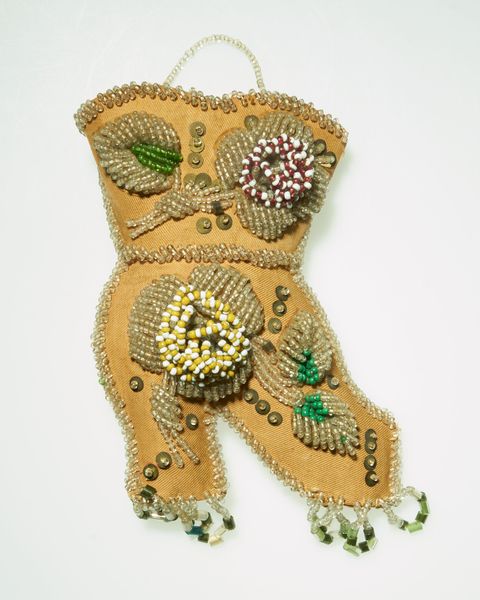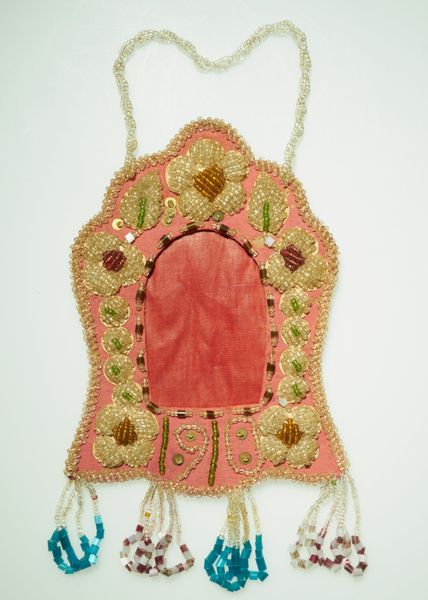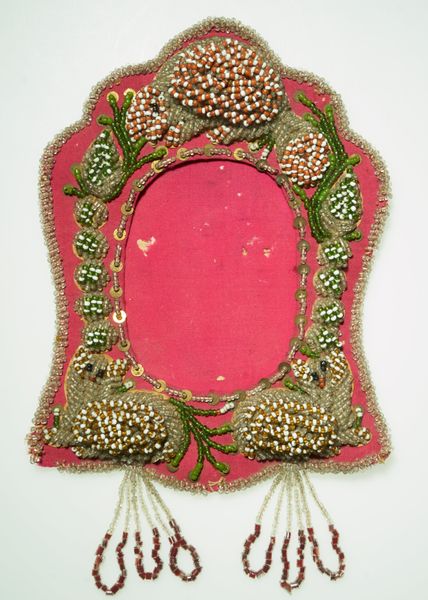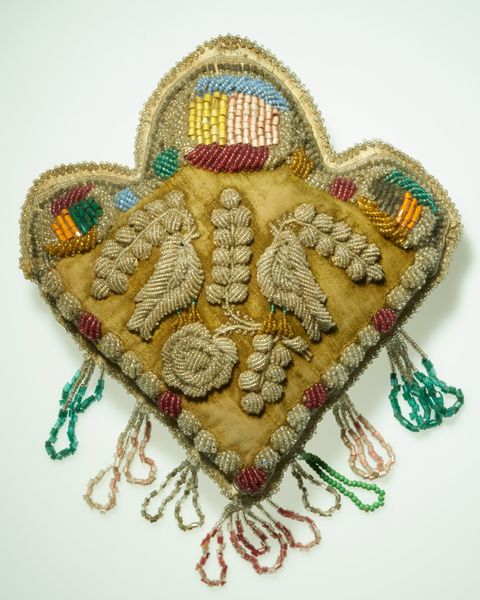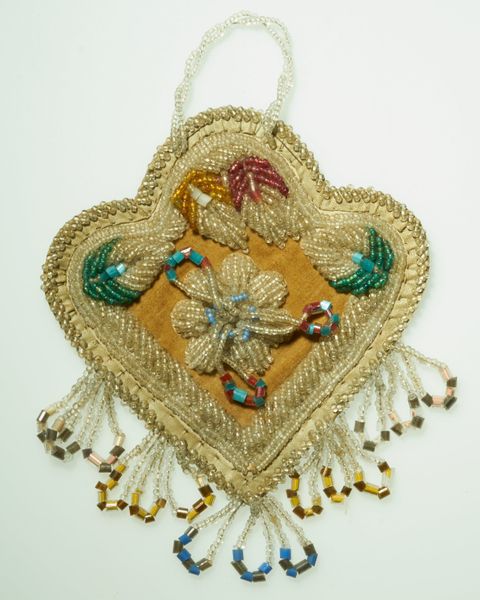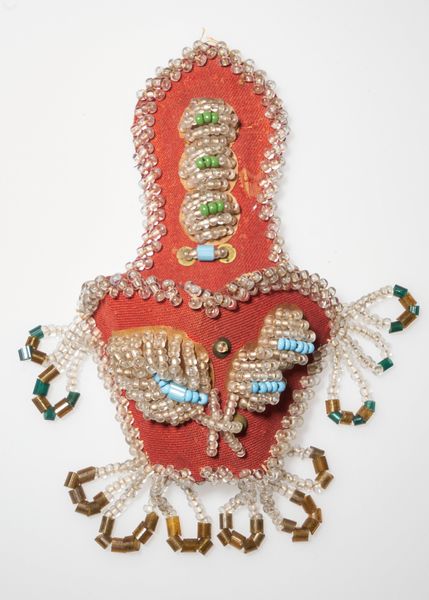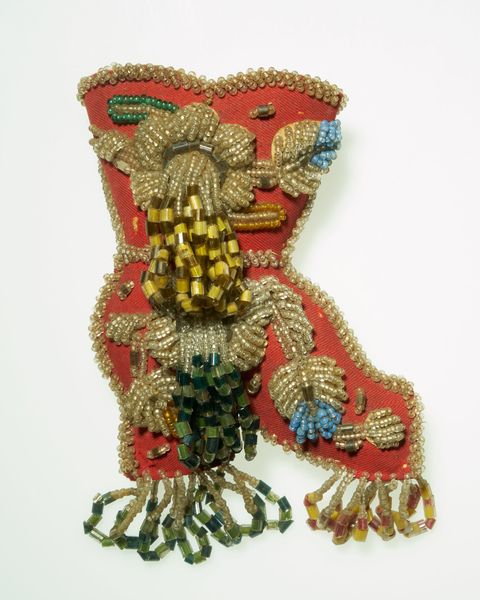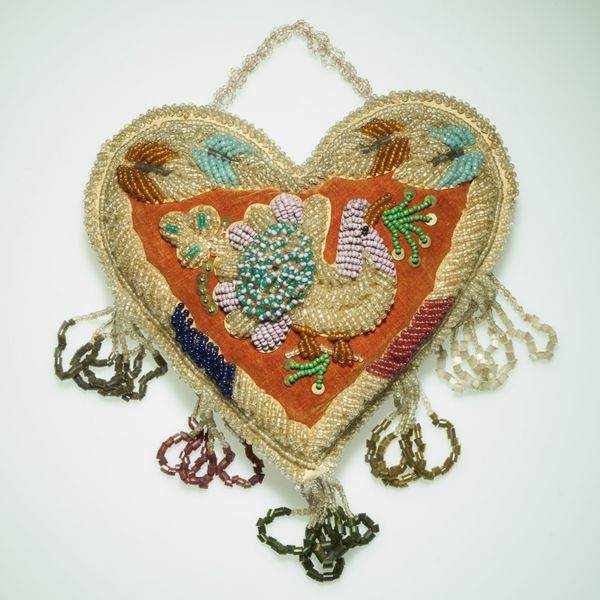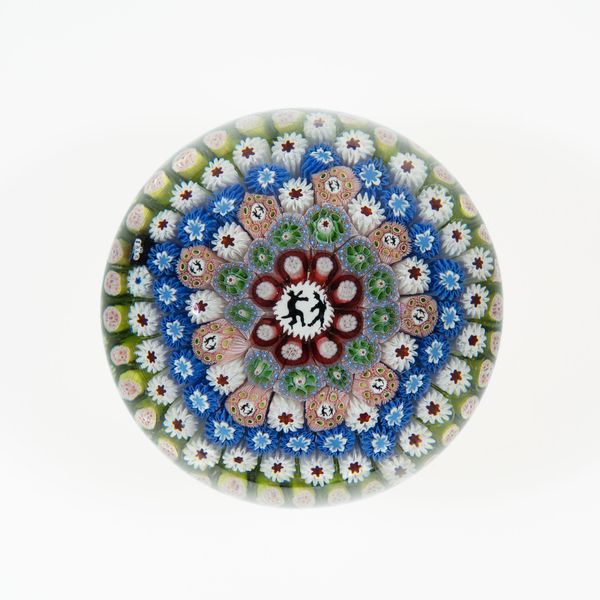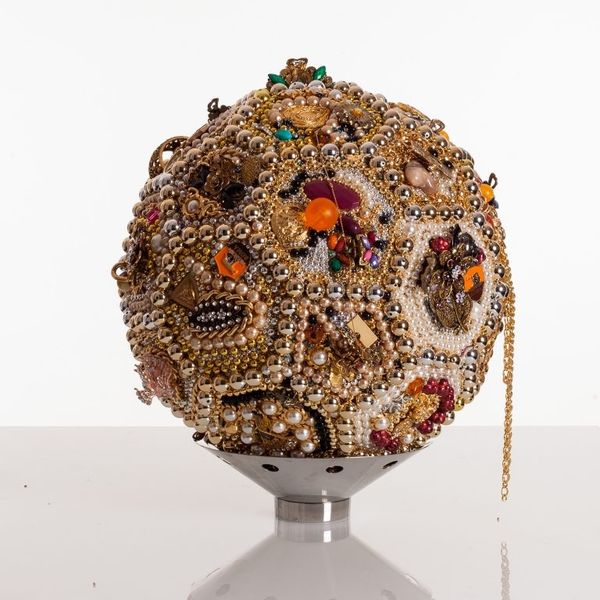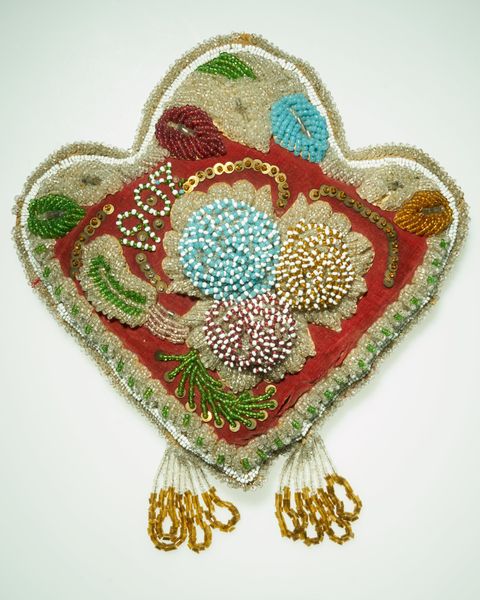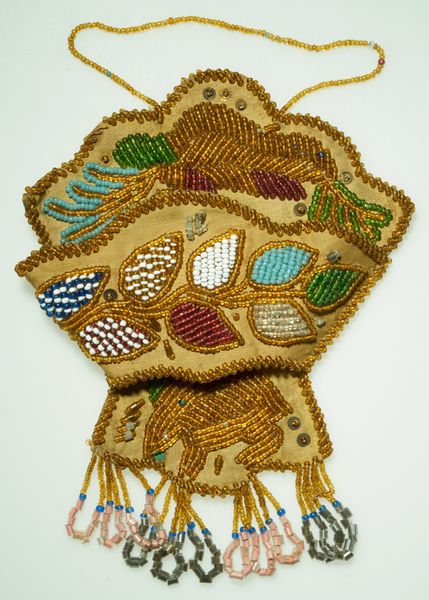
fibre-art, textile
#
fibre-art
#
textile
#
decorative-art
#
indigenous-americas
Dimensions: 5 1/2 x 6 1/2 x 5 3/8 in. (13.97 x 16.51 x 13.65 cm) (without dangles or handles)
Copyright: Public Domain
Editor: Here we have a charming object titled "Whimsey in the form of a purse," made around the 1910s by an artist of the Haudenosaunee (Iroquois) Nation. It's made of textile and cotton and is currently housed at the Minneapolis Institute of Art. I find the intricate beadwork just lovely. What symbols do you notice in this piece? Curator: It's captivating, isn't it? Beyond its aesthetic charm, the bag offers a window into Haudenosaunee visual language. Notice the central figure, what appears to be a duck, worked with such meticulous detail in tiny beads. Editor: Yes, I see it! What could the duck represent in this context? Curator: In many Indigenous cultures, waterfowl like ducks symbolize adaptability, resourcefulness, and connection to water—a vital source of life. The inclusion of "161" at the top is a mystery. Does it have cultural memory of specific moment, a family name? What's fascinating is how the beaded imagery embodies a sense of cultural continuity. What are your thoughts? Editor: That's a lot to take in. Thinking about adaptability and cultural memory adds new dimensions to my understanding. It's more than just a pretty purse. Curator: Precisely! The bag acts as a material form of cultural memory. The use of beads themselves also speaks to a history of trade and cultural exchange. Editor: It's amazing how much history and meaning can be packed into such a small object. It's like holding a story in your hands. Curator: Indeed. These symbols, transformed into a new kind of iconography, reveal a continuity between past and present. A very important reminder about symbolism and cultural relevance in our modern understanding.
Comments
No comments
Be the first to comment and join the conversation on the ultimate creative platform.
